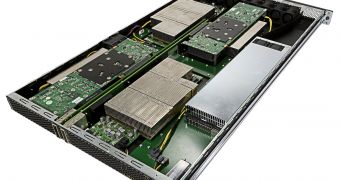Nvidia seems pretty confident that the high energy efficiency of the ARM architecture makes it a much better alternative for HPC computing than x86 and therefore is currently working on bringing this arch in the high-performance computing and server markets.
In an interview with EETimes, Sumit Gupta, Director for High Performance Computing Products at Nvidia said that the only advantage of x86 systems is that they can react much faster to unpredictable tasks, but ARM is far better suited for applications that require maximum performance on minimum power.
“The number one consideration for x86 has always been to make operating systems like Windows run much faster and to be able to respond to unpredictable tasks, such as a mouse-click or a keyboard entry,” said Gupta.
He continued by adding that this is the reason why such a large part of the x86 CPU die is used for branch prediction and speculative execution, two features that aren’t that important for running HPC tasks.
“It’s a terrific processor for everyday computing, not the right device as we go towards high performance computing,” concluded Nvidia’s rep.
According to Gupta, what the HPC crowd needs in the future is a platform that combines the advantages of the ARM processor cores with those of CUDA GPUs.
Nvidia has already begun exploring this alternative together with the Barcelona Supercomputing Center (BSC) which plans to build am exascale supercomputer using energy-efficient ARM processor cores.
In order to help BSC, Nvidia has provided it with a series of hardware boards that pair together quad-core Nvidia Tegra 3 system-on-a-chip (SoC) devices with Nvidia CUDA GPUs.
BSC's ultimate goal is to deliver exascale-level performance while using 15 to 30 times less power than current supercomputer architectures.

 14 DAY TRIAL //
14 DAY TRIAL // 